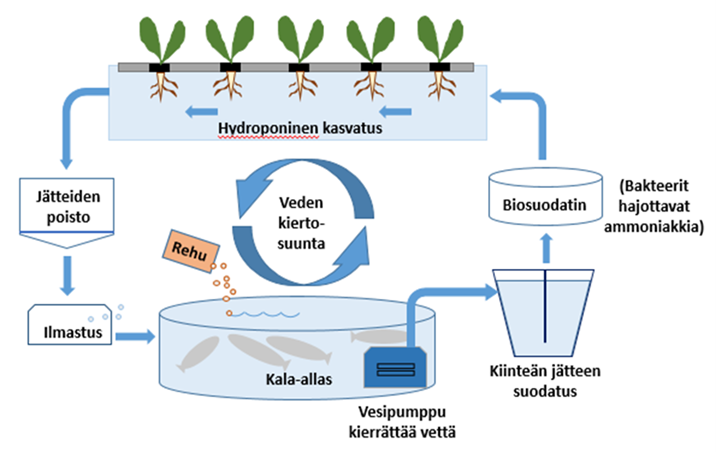FUSILLI focuses on achieving an integrated and safe holistic transition towards healthy, sustainable, secure, inclusive and cost-efficient food systems. Here, the 12 project cities are in the core of the project activities and the aim is to figure out how cities can drive towards sustainable food systems. One important part of the path towards sustainable food systems is the development of new food production methods. Thus, the focus is not so much on large scale food producers, but closer to cities and citizens.
In the Tampere Living Lab, the focus on food production has been on low-technology urban gardening for citizens, such as the raised-bed cultivation methods, as well as improving soil quality through composting methods. From the city of Tampere perspective, we have focused heavily on food produced by the citizens and done a lot of actions to improve possibilities for food production in city-owned gardening plots used for recreational gardening. Less focus has been put on more technology driven, commercially viable food production methods. There are, however, a myriad of possibilities for technological solutions suitable for urban smaller places, among them the aquaponics method. In this blog post I will try to dig in deeper to the wonderful world of aquaponics.
Aquaponic farming
Aquaponic farming combines the production of aquatic animals, such as fish or crabs, and plants in a closed cycle. The pump in the system transports the water in the aquarium through the biofilter to the plants, which utilize the excrement of the fish. The water cleaned of nutrients is transferred back to be used by the fish. In aquaponic cultivation, the advantages of both organic farming, aquaculture and farming are realized. The advantages of the system are nutrient cycling in accordance with circular economy, no waste, water efficiency and the health and safety of farm animals, i.e. the fish.

Picture: Process description of the aquaponic growing system report of the KIEPPI project: URBAN AQUAPONICS FARMING, Case Hiedanranta. (Timo Loiva, Sanna Teinilä, Marikki Väisänen 2021)
In Finland, aquaponics has been mainly tested on the pilot level in different projects, even though there are a few operators offering small scale aquaponics systems to the markets. There are very few examples of large-scale aquaponics systems in Finland and the ones tested have not been economically viable thus far. There are, however a few studies that show the benefits of combining aquatic animal and food production. The idea is, that food production can be done closer to the consumer thus reducing the environmental effect of food production by eliminating transport and the need of added nutrients. It is also a very interesting hobby, in which you can dedicate as many hours as you have. It is also an interesting way to produce your own vegetables and protein close to home and it might even be a nice idea to produce food together e.g. for a group of people living in the same block of flats. This kind of food production would also enable the implementation of a new kind of neighbourhood food production. Besides the obvious environmental benefits, it offers fresh food for the producer year around, which especially in Finland is a bonus because of the long winters, when nothing grows in the fields. It could also be a source of additional income, if the crop could be sold to restaurants of shops nearby (which, in Finland would require an environmental permit after 2000 kg of fish a year).
Building an aquaponic system
For the actual implementation of the system, one can put as much effort and money as one has. There are many different types of technological solutions. If you are handy enough, it is quite possible to build the system yourself, but there are also ready-made systems in the markets available. What you need to start besides the actual system (so pumps, filters, tanks and seedbeds), are
- baby fish (or crabs or even mussels),
- plant seedlings of your choice (lettuce is quite traditional, but any plant suitable for aquaculture will do)
- and fish food.
Then you have to make sure to monitor the system (eg. the acidity of the water and different amounts of nutrients should be monitored) and enjoy your new hobby and the fresh food from it. Hopefully we will see these kinds of systems more and more in Finland, there are a lot of possibilities for both recreational and professional implementation. Perhaps in the future, we even see restaurants raising their own salads and fish or other aquatic animals and we as consumer get to enjoy the freshness of the produce.
